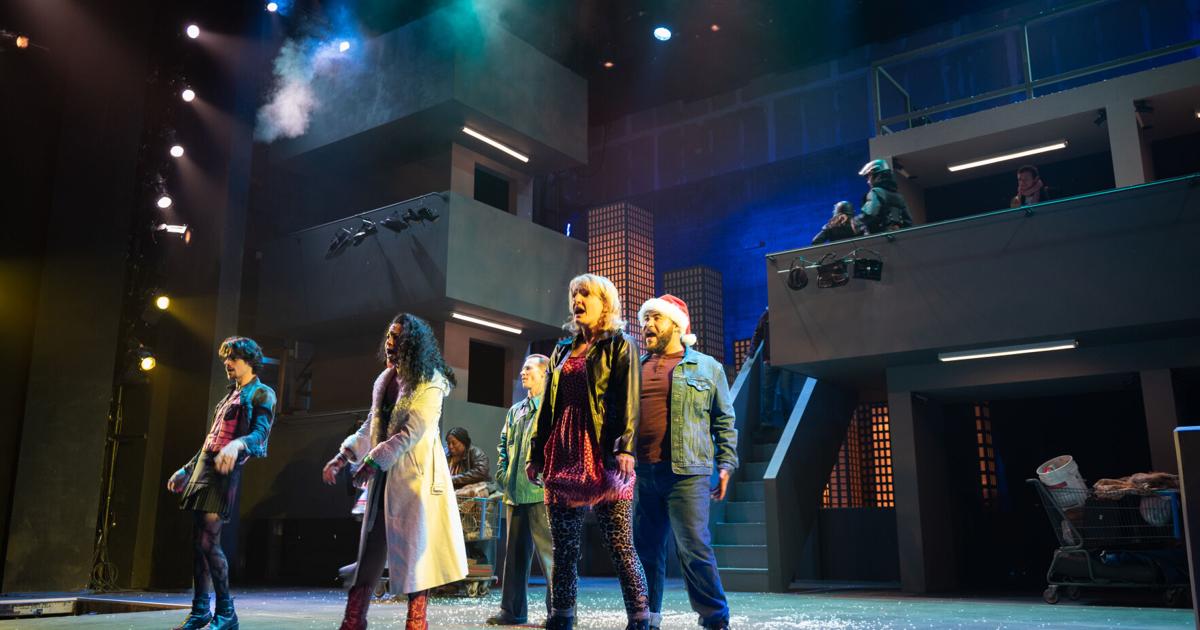The first performance of Tony Award winning musical “Rent” was 1996.
At the time, it was a new rock musical by little-known writer Jonathan Larson, presented in a small off-Broadway theater.
But now, nearly 30 years later, director Marisa Hebert hopes to recaptivate audiences by repainting the story that became an internationally acclaimed musical.
“I am always of the mind that if something is more than two decades old, we’re allowed to change the concept of it,” Hebert said. “Going into it, I gave my designers a very clear path. I said, ‘Let’s take everything we know about ‘Rent’ and break it. I don’t want people to walk in thinking they’re going to get the same ‘Rent that they’ve gotten since early-to-mid ’90s. So we really worked on the concept of trying to bring the story of ‘Rent’ but imposing it over different visual that people aren’t used to.”

The Colorado Springs Fine Arts Center is set to present “RENT” throughout the month of May, opening Thursday evening. The story follows a group of young artists struggling to survive in New York’s Lower East Side under the shadow of the HIV/AIDS crisis in the 1990s.
The story, based loosely on Puccini’s “La Boheme,” follows a group of young artists struggling to survive in New York’s Lower East Side under the shadow of the HIV/AIDS crisis in the 1990s. Featuring a cast of couples, the characters navigate love, loss and grief.
“I have loved the show forever, and directing the show has been really just a big, long love story of the last few weeks of my life, the cast and the team and the music — like who doesn’t want to spend six to eight hours a day listening to incredible people seeing incredible music. I feel like it’s a gift,” Hebert said.
In directing the show, Hebert did a lot of research on the creation of the musical and documentaries about the AIDS crisis. The graphic nature of the activism inspired the direction of the play, Hebert said.

The Colorado Springs Fine Arts Center is set to present “RENT” throughout the month of May, opening Thursday evening. The story follows a group of young artists struggling to survive in New York’s Lower East Side under the shadow of the HIV/AIDS crisis in the 1990s.
“It felt very similar to how graphic novels feel today, where you tell a story per pane,” Hebert said. “I kind of went down a rabbit hole of ‘What would it be like if we put ‘Rent’ into a graphic novel?’ And that’s what I told my design team. … So we really have taken some liberties with making it feel more like a graphic version of ‘Rent’ as opposed to like an operatic or an industrial version.”
Overall, Hebert hopes to tell the story of community and love.
“I specifically hope that our audiences won’t see this as a queer story or a brown story or a story about drugs, but that they’ll just see it as a community of people who found each other and made their own family, and despite everything else, chose to love one another,” Hebert said.












